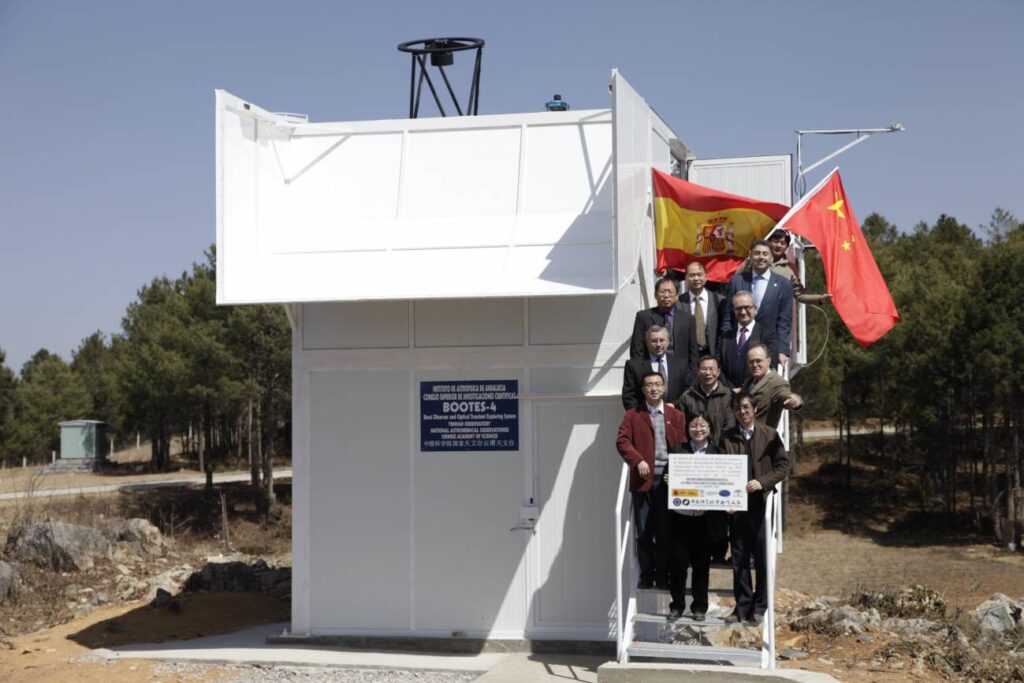BOOTES-4 is the fourth robotic observatory of the BOOTES Global Network of robotic telescopes BOOTES. It was shipped to China in summer 2012. The fourth observatory was built in southern China. It is located at the Lijiang observatory, more than 3200 metres above sea level and over 220 clear nights at year. Its installation was completed in October 2011 but it was not until February 2012 that it saw its first light. The inauguration was attended by the Spanish consul in the province of Canton and will be attended by representatives of the CDTI (Centre for the Development of Industrial Technology, Delegation in Shanghai) and the CSIC itself on the Spanish side, in the person of the principal investigator of the project, Alberto J. Castro Tirado. Its main scientific objective is the observation and monitoring of the optical
counterparts of gamma ray bursts as quickly as possible once they have been detected from space-borne or ground-based observatories. The BOOTES-4 telescope as named “María Eva Telescope” (MET) following the name of the spanish lady María Eva Alcoholado Feltström. The The BOOTES-4 observatory is a collaboration between the Institute of Astronomy of the Institute of Astrophysics of Andalusia (IAA-CSIC), Spain, and the Yunnan National Observatory (YNAO) of the Chinese Academy of Sciences.

It uses a dedicated 0.60 m f/8 Ritchey-Chretien telescope located at Boyden Observatory, near Bloemfontein, South Africa (Latitude 29° 02′ 20″ S, Longitude 26° 24′ 20″ W, Elevation 1380 m). The telescope has an ASTELCO NTM-500 mount with a maximum slewing speed of 20 degrees per second. The optical tube is made of carbon fiber to minimize the moment of inertia to reach it maximum slewing speed and to reduce the focus changes for thermal expansion. It operates in an open air dome.
Nowadays, the BOOTES-4 astronomical station instrumental setup is the following one:
| BOOTES-4 | |
| Montura | Astelco NTM-500 |
| CCD | Andor iXon EMCCD |
| Distancia focal | 4800 mm |
| F | f/8 |
| Campo de visión | 10.3 arcmin |
| Filtros | Sloan u’, g’, r’, i’ UKIRT Z and Y |
| – | – |
| All-sky CCD camera | |
| CASANDRA-1 | |
| Campo de visión | 180 grados |